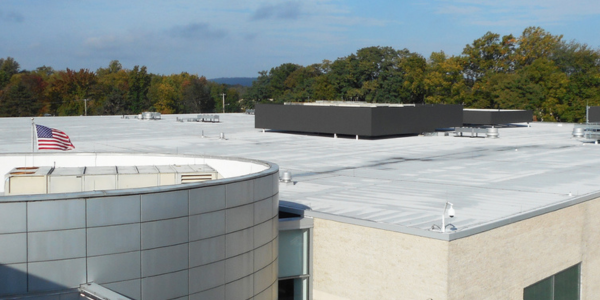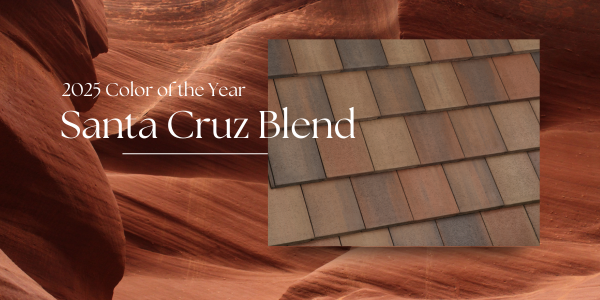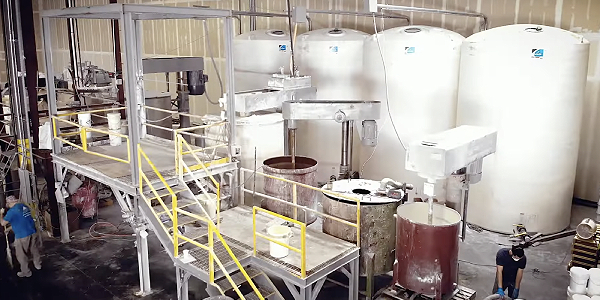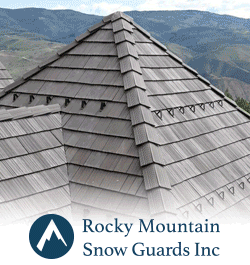Condensed Technical Tips

By General Coatings.
General Coatings offers quick and easy access to expert insights and recommendations to best apply their coating.
General Coatings features a resources section on their website that features technical tips for application and maintenance. These technical tips come in PDF’s that are around eight pages, and can be found in General Coatings technical library. Here, tech tips are summarized and put into one place for quick and easy access to expert information about installations. Read on for a speedy overview of SPF applications, spray gun advice and more.
Maintain adequate SPF temperature in the cold
In cold weather, it is important to maintain adequate SPF material temperature to ensure proper metering and mixing of the A and B components. One way of accomplishing this is by a process of recirculation.
First, turn the preheaters and hose heat on. Next, use the transfer pumps (do not engage proportioner) to circulate the material through the preheaters and heated hoses, and then back into appropriate drums. This process will raise the liquid material temperature quickly and uniformly. Care should be taken to prevent excess moisture or humidity from entering the system during this process or contamination can occur.
Flush pots
Many applicators enjoy using flush pot assemblies to clean their plural component spray guns. The proper techniques must be used to clean the gun thoroughly. Use the following technique to be assured of a clean gun when using a flush pot:
-
Clean one side of your gun at a time. (This requires a flush pot coupling with two manual valves).
-
Clean the least viscous (thinnest side) first. This is usually the "A" side.
-
Clean the other side next.
-
Open both valves and flush both sides.
-
Flush at each step until clean solvent comes through the gun in a steady stream.
Maintain pressure and ratio when applying plural components
Plural Component spray equipment frequently arrives from the factory with size 80 or 60 mesh pump and gun screens. While this works fine with SPF applications, the screen mesh size may be too small for many plural component coating applications.
Fillers typically used in coatings can clog small mesh screens, leading to off-pressure and/or off-ratio conditions. If you are experiencing difficulties maintaining equal pressures and/or staying on-ratio when applying plural component coatings, try using a larger mesh screen.
Form a smooth surface
In order to apply spray polyurethane foam (SPF) to form a smooth surface profile and produce specified physical properties, a proper application technique must be used. The spray gun should be held as perpendicular to the substrate as possible. Spraying at a severe angle will cause the SPF to roll and exhibit a 'tree-bark' surface profile. This profile may cause the SPF to exhibit poor physical properties and significantly increases the surface area of the SPF to receive protective coatings.
You should feather your passes at the outside edges. This will leave a taper on the outside edges that will blend in smoothly with the subsequent pass. The application of the SPF should be installed at a consistent rate to allow approximately 80 percent of the spray pattern to overlap the previous lift. This will eliminate any washboard undulation and create a smoother surface profile. The SPF should rise smoothly and uniformly.
Your tie-in to the adjacent pass will vary depending on your natural pass width. The tie-in pass should carry onto the previous pass by 10 to 20 percent of your pass width. Try using the following technique to control your tie-in detail: Spray a full-length pass (30-40 linear feet). Start your new pass immediately adjacent to the first pass. After approximately 10 linear feet, stop spraying. Get on your hands and knees and observe the pass line. The elevation of the SPF at the pass line should match the middle of the pass. If there is a ridge between the two passes, take a half of a step away from the first pass and continue spraying. If there is a valley, take a half of a step towards the first pass. If there is a 'tree-bark' surface at the pass line, narrow your pass width. With practice, these techniques become automatic. Your foam application will look much better, require less coating and provide better drainage.
On ratio?
Many SPF contractors find that their B-side drums do not empty at the same time as their A-side drums and worry that their equipment might be malfunctioning. But before tearing down and rebuilding your pumps, consider the density differences between the A- and B- components. SPF proportioning pumps are designed to process A- and B-components at a ratio of 1:1 by volume, not by weight.
However, many SPF systems houses package their materials in drums or other containers by equal weight. For example, SPF systems are typically packaged in 55-gallon drum sets: "A" being designated for the isocyanate component (pMDI) and "B" for the resin component.
If both drums weigh the same, the volume of isocyanate (A) is less than the resin (B) due to the specific gravity differences of the two materials. Simply stated, one pound of isocyanate (A) will be less volume than one pound of resin (B). Therefore, there is more volume of resin in a drum set of equal weight. As the material is processed (1:1 by volume) there will be resin left over. If you find that you chronically have excess resin (B-component), ask your supplier if they ship sets by equal weight or equal volume.
Thermal barriers
Building codes require that foam plastic insulation, such as SPF, be covered with a thermal barrier to slow their involvement in fire situations. Thermal barriers are discussed in the International Building Code (IBC) in Section 2603 and in the International Residential Code (IRC) in Section R314. ½-inch thick gypsum board is one commonly used thermal barrier. It and other thermal barriers are designed to "limit the average temperature rise of the unexposed [foam plastic insulation] surface to no more than 250 oF (121 oC) after 15 minutes of fire exposure to the ASTM E 119 standard time temperature curve." [IRC 2003, Section R314.1.2]
But there are MANY exceptions to the thermal barrier requirement. For example:
- Building code authorities may approve coverings based on fire tests specific to the SPF application. For example, covering systems that successfully pass large scale tests (such as the small room corner test) may be approved by code authorities in lieu of a thermal barrier.
- SPF protected by a 25 mm (1-inch) thickness of masonry does not need a thermal barrier.
- Certain SPF roof covering systems do not require a thermal barrier between the SPF and the interior.
Ignition barriers
Another exception to the thermal barrier requirement is in attics and crawl spaces where entry is made only for the service of utilities. In these cases, SPF must be protected from ignition by covering with 38 mm (1 1/2 inch) mineral fiber insulation, 6.4 mm (1/4 inch) wood structural panels, 9.5 mm (3/8 inch) gypsum board or other code prescribed material.
These materials which offer protection from ignition are called "ignition barriers" (the building codes do not use the term "ignition barrier"; this term is a common vernacular used by the building trades to describe these and equivalent materials). As with thermal barriers, code authorities may accept alternatives to the above prescribed based on fire tests specific to the SPF application.
In general
Materials which are not specifically prescribed by the building codes may be approved by building code authorities for use as a substitute or an exception to the requirement of a thermal barrier or ignition barrier when based on fire tests specific to the SPF application. Just because a material is advertised as a "thermal barrier" or "ignition barrier" does not mean that it has been tested in conjunction with SPF and approved by a code agency or a local code official.
Ask for test data and code body approvals, listings, or other written indications of acceptability under the code to be sure that the product selected offers the fire protection that the code demands. For more information, refer to SPFA Document AY 126 Thermal Barriers for the Spray Polyurethane Foam Industry and API Document AX 230 Fire Safety Guidelines for Use of Rigid Polyurethane and Polyisocyanurate Foam Insulation in Building Construction.
Reducing weight with SPF
Power brooming or roof vacuuming an old Built-Up Roof (BUR) should remove about three pounds of gravel per square foot. This statement is made assuming that a typical application of four pounds of gravel per square foot was initially applied. The application of a spray polyurethane foam roof with a coating system should only weigh about one-third or one-quarter pound per square foot.
Obviously, the roof weight reduction is significant. It is possible that a deflected roof can demonstrate some memory and recover some of the original shape of the BUR system as a direct result of the dramatic weight reduction. Equally significant is the process where the roof is sprayed with polyurethane foam and sloped 1/4 inch per foot to drains.
As the weight of water is 5.2 pounds per square foot at a one-inch depth, the elimination of ponding water on a roof can dramatically lengthen the life span of a roof and reduce those costly repairs. Spray polyurethane foam roofing and leaky old downtown buildings are made for each other. There is a tremendous market for SPF in the core of your city. Think about it!
Coating reversion
Coating reversion of two-component polyurethane coatings was a problem primarily in roofs that were coated in the early to late 1980s. I have not seen the condition in the last 10 years. Reversion of coatings refers to a condition where the coating originally sets up and exhibits good physical properties initially then over a period of time (usually years), the coating (typically the base coating) becomes soft and gummy.
Sometimes the coating appears fine in cool to cold weather and only becomes soft during warm and hot weather. This makes it hard to diagnose at times. The causes of reverted coating usually stem from the A side not mixing thoroughly with the B side component and eventually having the A side react with water vapor. Since it is usually the base coating, the top coating may appear fine. Sometimes the top coating may start to lose adhesion with the base coating. If this happens, the recommendation is to scarify the coating and top surface of foam, re-foam and re-coat the roof. If the adhesion is good and the coating is providing adequate UV protection, it is usually best to just leave it alone.
Using power brooming to your advantage
Power brooming or roof vacuuming an old Built-Up Roof (BUR) should remove about three pounds of gravel per square foot. This statement is made assuming that a typical application of four pounds of gravel per square foot was initially applied. This application of a spray polyurethane foam roof with a coating system should only weigh about one-third or one-quarter pound per square foot.
Obviously, the roof weight reduction is significant. It is possible that a deflected roof can demonstrate some memory and recover some of the original shape of the BUR system as a direct result of the dramatic weight reduction. Equally significant is the process where the roof is sprayed with polyurethane foam and sloped to drain ¼ inch per foot to drains.
As the weight of water is 5.2 pounds per square foot at one-inch depth, the elimination of ponding water on a roof can dramatically lengthen the life span of a roof and reduces those costly roof repairs. Spray polyurethane foam roofing and leaky old downtown buildings are made for each other.
Scarifying Spray Polyurethane Foam
Scarifying is the process of cutting or planning off the upper surface of the SPF. While it is acceptable to scarify or scarf the SPF and refoam, a couple of simple rules must be followed or job failure can occur. Scarifying should extend down a minimum of ½ inch to sound, dry dimensionally stable on-ratio SPF. Care should be taken to assure that the coatings in the low areas are removed during scarification and that scarification is extended below suspected problem areas such as UV degradated SPF.
The area must then be cleaned by broom or blown air. On the same day, the SPF must either be re-foamed or it must be primed with a dark-colored acceptable primer. If the SPF is installed at a later date, blistering of the new SPF may occur. The reason this occurs is moisture from dew formation is very difficult to dry on scarified SPF. Foaming the same day as scarifying the foam eliminates the possibility of dew formation.
In cases where foaming the same day is not practical, a dark primer will stop UV degradation of the foam and give a dark substrate to hold heat, speeding dew evaporation. An additional benefit of the dark primer is that it aids in the rise of the new foam.
Learn more about General Coatings in their RoofersCoffeeShop® Directory or visit www.generalcoatings.net.
Recommended For You

Modified bitumen roofing done right
Read More ...
In our brown era: Meet Eagle’s 2025 Color of the Year
Read More ...
Innovating with the contractor in mind
Read More ...















-2025-xtv-mls-tour-2.png)

Comments
Leave a Reply
Have an account? Login to leave a comment!
Sign In